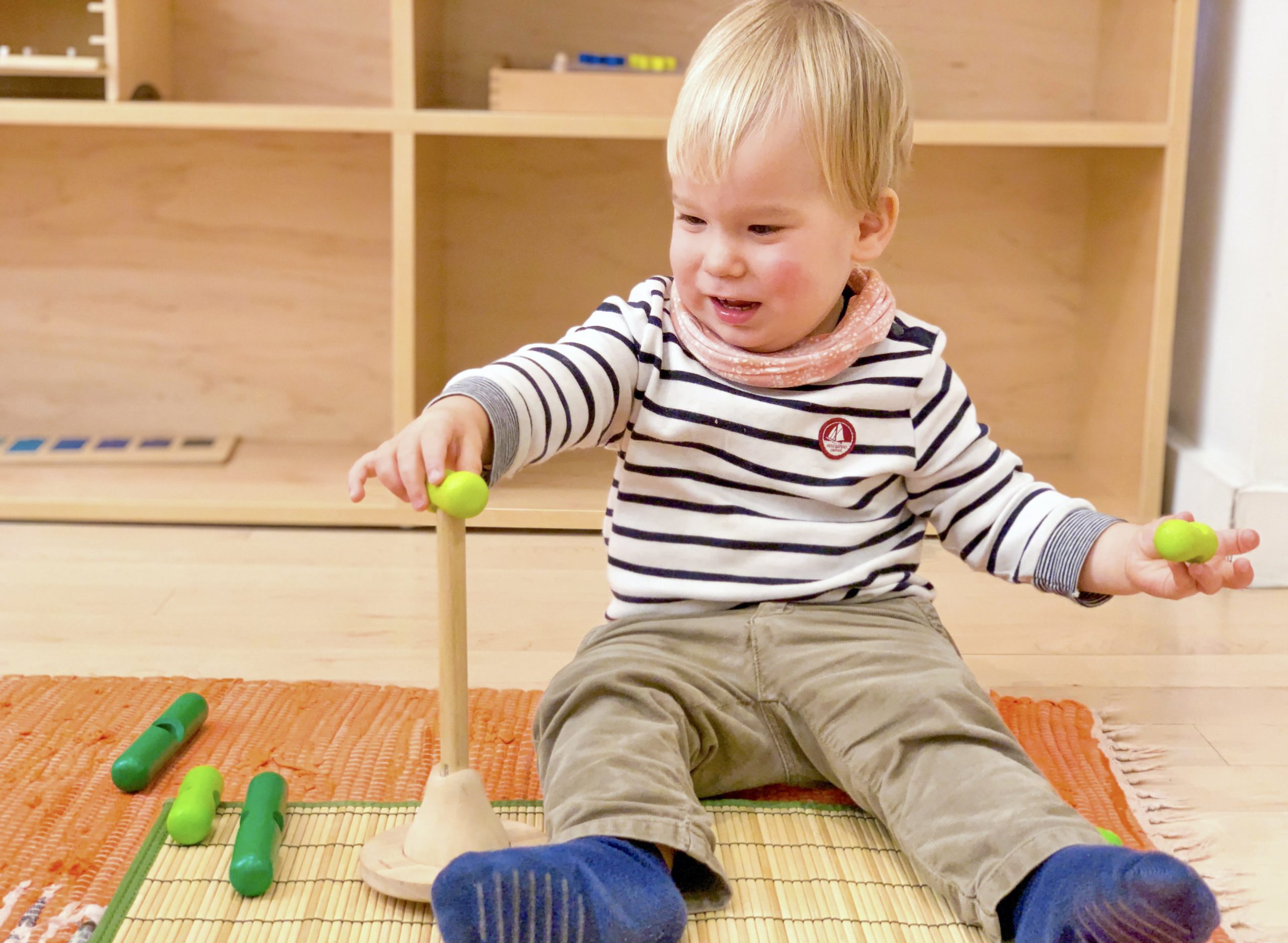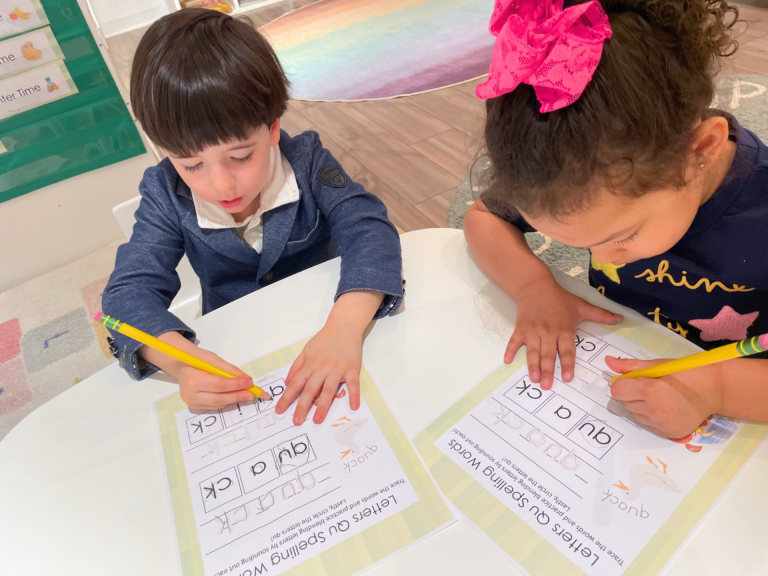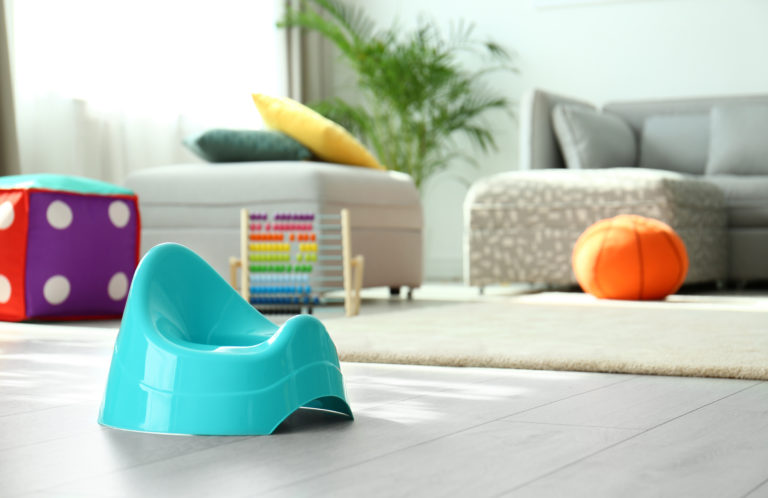How to Set Up a Montessori Nursery

Children are unrolling work mats and getting a puzzle to work through. Little ones are standing at the wooden play kitchen making pretend breakfast, or putting on a firefighter jacket in dramatic play. These are just a few scenes I may see when I walk into the Montessori room at Playgarden Prep. Students are free to independently explore activities they find interesting and engaging. Fortunately, this type of play is not limited to the classroom! A Montessori nursery room can easily be created at home, so your little one can begin to explore an environment that will get them ready for an enriching early childhood education.
What is Montessori?
The Montessori approach to early childhood education was developed by Dr. Maria Montessori, who “found that children have natural curiosity and instinctive motivation to pursue what is of interest to them.” The goal is to encourage learning through hands-on activities and self-direction. Your child will start to develop hobbies and can better inform you as a Montessori parent, how they enjoy learning.
What makes a Montessori playroom?
The basics of a Montessori nursery room include:
Everything at Child’s Level
- The materials in this room need to be accessible for the child, without them needing to ask for help. It promotes self-sufficiency and lets them freely, and safely, explore their environment.
Playmats and Baskets
- Playmats allow for freedom of movement, letting your little one sit on the floor, sprawl, or just settle themselves down in whatever way they are most comfortable. Mats can also help differentiate a play space and a workspace in your Montessori nursery.
- Using baskets and trays to store and display toys teaches your little one to respect their toys and materials. They’ll learn where their toys live or “go to sleep” when it’s time to clean up. These practices can make them a very helpful hand to you as a Montessori parent in the online homeschool classroom as they start their early childhood education.
Limited Activities
- A stationary activity, like a kitchen or workbench, is great to keep in the playroom all the time, while other activities like puzzles, blocks, etc, can be rotated out every couple of weeks.
- The goal is engagement over entertainment. It’s safe to call this room an “iPad-free zone.” Your little one should be able to have a couple activities to choose from, but not so many that it’s overwhelming. A plus is that it’s less clean up for both the little one and you, the Montessori parent!
Recommended Activities
- When looking for materials for your Montessori nursery, focus on activities and toys that are open-ended, so your little one’s imagination and creativity can run wild. Building blocks, matching activities, and puzzles are some examples that are popular at Playgarden Prep.
- Some type of climber can be advantageous for a Montessori nursery — especially when your little one needs a bit more stimulation than a puzzle or building blocks. A climber helps with gross motor development, exercising both their bodies and minds.
Your Montessori nursery is a room for your little one to play and learn; so long as they feel safe and confident exploring their space, then you have done your job as a Montessori parent. For more tips and tools for your little one’s early childhood education, join Playgarden Online today!
Popular


Hi, I'm Miss Julia!
Miss Julia has been an early childhood educator for 5 years, with over 10 years of experience working in childcare. She has been teaching at Playgarden Prep since 2017, and is happy to share ideas on some of her favorite early education topics with you! Miss Julia has a BA from UC Irvine, and uses her experience in performing arts to inspire little ones every day in her enrichment classes at Playgarden. In her free time, Miss Julia loves enjoying nature, cooking, and creating with friends.






